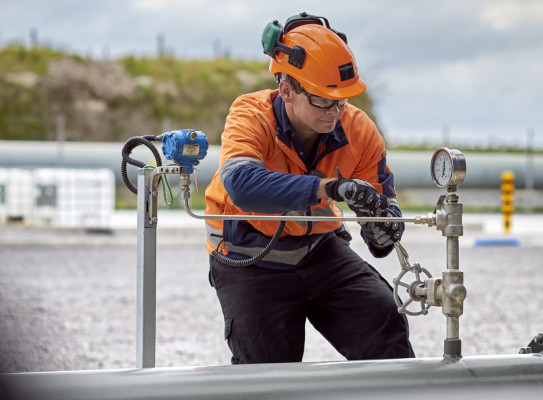Deep geothermal – our clean energy future

The key to getting New Zealand’s carbon emissions to net zero by 2050 may lie several kilometres below our feet.
That’s the view of our geothermal energy group who, in collaboration with their research partners, is investigating how to tap deep and very hot geothermal resources in the central North Island.
Scientists consider these resources have the potential to play a major role in the transformation of our energy sector. This work will also open the way for investment opportunities and new employment, especially in industrial-scale use of energy.
Supported through MBIE’s Endeavour Fund, the project is aiming to find underground energy sources that are more than 100 degrees Celsius hotter than currently used in Aotearoa New Zealand.
A particular focus is the Taupō Volcanic Zone – the area between Lake Taupō and Whakatāne – and for resources favourable for the development and study of the distinct chemical characteristics of these underground environments.
At present, conventional geothermal wells are drilled to a maximum depth of about 3.5km. However, by drilling beyond this, possibly to 6km, scientists believe more energy will be available at the surface for the same amount of geothermal fluid extracted. The extreme physical and chemical conditions at the deeper depths make it a challenging undertaking.
The project is aiming to identify the best areas for exploratory drilling. It is also exploring the potential for re-injecting carbon dioxide produced as a result, to enable emissions-free ‘deep heat’ energy.
Laboratory simulations will be used to see how these very hot fluids react with rock, and how their use will affect deep reservoirs and neighbouring shallower reservoirs.
Project leader Dr Isabelle Chambefort says the team is using specialist techniques to explore the subsurface and understand the interactions between New Zealand’s rocks and fluids under supercritical conditions.
“We will explore the locations and behaviour of these superheated fluids, and determine the heat and energy potential available for use," she says.

This research builds on more than 60 years of New Zealand’s leadership in geothermal energy, including extensive large-scale geothermal energy utilisation for industrial direct heat and electricity generation.
Alongside this work, our experts will evaluate how these deep resources might best be managed under legislative and planning frameworks. The project team is planning significant consultation and engagement with Māori, central and local government, and industry as the project develops.
Deep or very hot geothermal initiatives are also underway in several countries – notably Japan, Italy, Iceland, Mexico, and the United States. However, no-one has successfully managed to harness the very hot geothermal resources from these depths yet.
General Manager, Geothermal Resources and Development, at Contact Energy, Mike Dunstall, says advancing the technology necessary for development of geothermal resources is a key focus area for Contact.
We anticipate the GNS Science-led research programmes such as ‘Geothermal: The Next Generation’ will provide important insights to ensure sustainable use of geothermal resources for power generation in New Zealand
Deep geothermal generation will only go ahead in Aotearoa New Zealand when there is confidence that it can be done safely, sustainably, and economically.